07 July 2023
This Talk Time relates to your end-of-year report.
I can talk with adults at home about my report, recognising successes and strengths.
It’s important to remember that your achievements come in many forms. Your key strengths could relate to your learning behaviour, your attainment in a particular subject, or your speed of progress.
This is also a great opportunity to apply your understanding of the 8Rs for learning:
- responsive
- ready
- (safe) risks
- responsible
- resourceful
- resilient
- remember
- reflect
Being reflective will be the most prominent of the 8Rs in your conversations as you’ll identify successes recognised by your teacher in the report but also other strengths that you’re aware of. Consider which of the other 8Rs you currently excel at the most. Perhaps you’re a very responsible individual who always demonstrates good learning behaviour. Maybe you’re extremely resilient and have a never-give-up attitude. It could be that you’re very resourceful, using what’s around you to support your learning and not always seeking help right away.
30 June 2023
This week’s Talk Time relates to the knowledge we’ve gained about Science this half term.
I can show off my biological knowledge through my understanding of animals including humans.
Years 1 and 2 – Animals including humans:
- I know that animals, including humans, have offspring, which grow into adults.
- I can find out about and describe the basic needs of animals, including humans, for survival (water, food and air).
- I can describe the importance for humans of exercise, eating the right amount of different types of food, and hygiene.
Years 3 and 4 – Animals including humans:
- I can describe the simple functions of the basic parts of the digestive system in humans.
- I can identify the different types of teeth in humans and their simple functions.
- I can construct and interpret a variety of food chains, identifying producers, predators and prey.
Years 5 and 6 – Animals including humans:
- I can identify and name the main parts of the human circulatory system, and describe the functions of the heart, blood vessels and blood.
- I am aware of the impact of diet, exercise, drugs and lifestyle on the way my body functions.
- I can describe the ways in which nutrients and water are transported within animals, including humans.
At school, we refer to 8Rs to promote good learning behaviour:
- responsive
- ready
- (safe) risks
- responsible
- resourceful
- resilient
- remember
- reflect
This week’s ‘Remember 2s’ (R2s) directly link to three of the 8Rs:
- Remember – Think back to Science lessons, learning, tasks, games etc.
- Reflect – Which facts are you most confident with? Which ones do you need to work on?
- Resourceful – For facts you’re unsure of, how can you improve your understanding? Who could you ask at home or at school?
Year 5/6 only – complete your My Health My School pupil diary from Saturday 01 July for the next seven days and return it to class once completed
23 June 2023
This week’s Talk Time has a social theme:
I can talk about a healthy friendship I have.
A friendship is something we can choose to have and it should make us feel happy and secure. Healthy relationships are positive and welcoming towards others, and do not make others feel lonely or excluded. When thinking about a healthy friendship there are some important characteristics to consider such as mutual respect, truthfulness, loyalty, kindness, generosity, trust, sharing interests and experiences and support with problems and difficulties.
Think of someone in your life who you feel you have a healthy friendship with. Discuss why you feel it is a healthy relationship by linking it to some of the important characteristics listed above.
Encourage your child to think about what they would do if they were having difficulties with a friendship and who could help them.
16 June 2023
Key Stage 1 homework
This week’s Talk Time has a Reading theme.
I can talk about my favourite class novel so far.
Over the year, we’ve had the opportunity to read and enjoy lots of different types of books. This week, we’d like you to think back and talk about the book/novel you enjoyed reading the most and why.
Below are some of the class novels we have enjoyed so far in Key Stage 1.
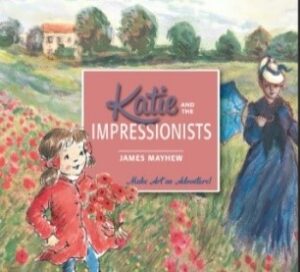

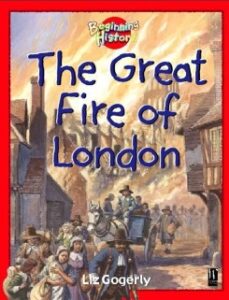
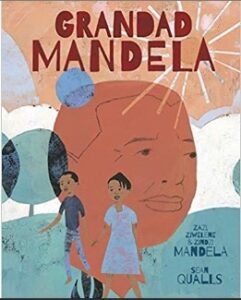

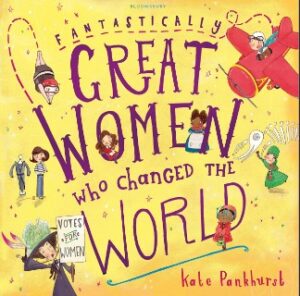
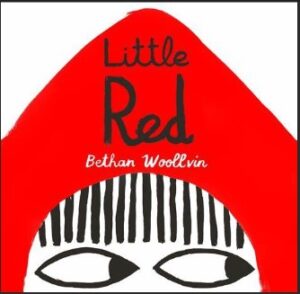

Key Stage 2 homework
This week’s Talk Time has a Reading theme.
I can talk about my favourite class novel so far.
Over the year, we’ve had the opportunity to read and enjoy lots of different types of books. This week, we’d like you to think back and talk about the book/novel you enjoyed reading the most and why.
Below are some of the class novels we have enjoyed so far.
Y3/4
Greek Myths by Marcia Williams
The Firework Maker’s Daughter by Phillip Pullman
Leodis Ledes Leeds by Tom Palmer
The Fastest Boy in the World by Elizabeth Laird
Y5/6
Secrets of a Sun King – Emma Carroll
Floodland – Marcus Sedgwick
Letters from the Lighthouse – Emma Caroll
09 June 2023
Vocabulary is the focus of this week’s homework. This is because we’ve just begun a new Design and Technology topic and with it comes new Design and Technology vocabulary.
Here’s a list of key words that are being learnt and applied as part of our learning. Over the half-term, practise using these words with your child.
Years 1 and 2 Design & Technology vocabulary:
- design process: the steps that need to happen for something to go from an idea to a finished product
- to plan: to think about and decide how you’re going to do something
- to evaluate: to decide, after careful consideration, how good or bad something is
- base: the bottom part of an object; the part on which something rests
- structure: a combination of materials and/or parts to create a 3d shape
- stable: something that is unlikely to fall down or collapse
- freestanding: something that stands up by itself
Years 3 and 4 Design & Technology vocabulary:
- product: something that is designed and made fu
- function: the purpose of something
- design brief: a description of what a new product should do
- design criteria: the precise features a product must have to be successful
- annotated sketch: a detailed sketch labelled with notes (eg dimensions, materials) prototype: an early sample or model of a product used to evaluate a design
- component: a part that combines with other parts to make something (eg a machine or a piece of equipment)
- exploded diagram: a drawing that shows the individual components or parts of a product and how they fit together
- mechanism: a number of parts or comp
Years 5 and 6 Design & Technology vocabulary:
- design criteria: the precise features a product must have in order to be successful
- innovative: an adjective to describe new or original ideas
- sustainable material: a material is sustainable if it comes from renewable sources and it does not damage the environment
- dimension: a measurement of something in a particular direction (eg height, length, width)
- aesthetic: something about the appearance (eg something can be aesthetically pleasing) computer-aided design (CAD): a way of drawing on a computer to visualise designs and simulating them to see how they work
- computer-aided design (CAD): a way of drawing on a computer to visualise designs and simulating them to see how they work
- to reinforce: to strengthen or support
Some of these words have been introduced already but there may be others that are going to be covered in the coming weeks.
19 May 2023
Vocabulary is the focus of this week’s homework. This half-term our topic has been History. We’ve been using and applying the key vocabulary below in our learning.
Years 1 and 2 History vocabulary:
- equal rights: being treated fairly and having the same chances in life.
- apartheid: a system that keeps people apart, usually because of their different skin colour.
- racism: treating people differently because of the colour of their skin, their religious beliefs or their culture.
- suffragette: a woman who campaigned for the rights of women to vote.
- protest: people coming together to show others that they are against an idea or an event.
- belief: a strongly held opinion that something is right.
Years 3 and 4 History vocabulary:
- West Indies: a group of islands located in the Caribbean Sea
- slave: a person who is owned by another person and forced to work for them with no pay or rights
- slave trade: the buying and selling of slaves (the Atlantic Slave Trade was the forced movement of millions of African people to the West Indies and America by Europeans)
- abolition: officially stopping or ending something, for example, slavery
- plantation: a large piece of land (farm or estate) used for growing crops on a large scale, such as cotton, tea, sugar cane
- carnival: a festival involving processions, music, dancing and wearing masks and costumes
- immigration: coming to live permanently from another country
Years 5 and 6 History vocabulary:
- evacuation: the movement of people from a place of danger to a safer place
- refugee: a person who has been forced to leave their country to escape war, natural disaster or persecution
- The Blitz: the German bombing campaign against the United Kingdom in 1940-41
- persecution: the treatment of people really badly, especially because of their race, political or religious beliefs
- Women’s Land Army: a unit of women recruited to do agricultural work in the UK during World War I and World War II
- immigration: the action of coming to live permanently in a foreign country
- British Empire: the group of countries which were ruled or controlled by Britain
- Windrush Generation: people from the West Indies who immigrated to Britain after the war, initially on the ship called The Empire Windrush
All of these words have been introduced over the half term. How confident do you feel explaining what they mean? Can you traffic light them into green (very confident), yellow/orange (mostly confident) or red (not confident).
05 May 2023
This week’s Talk Time has a moral question.
Should all adults have the right to vote?
What is voting?
Voting is a process by which a group of people can decide things fairly when they don’t all agree. Voting is an important part of the type of government called democracy. In a democracy, people use voting to choose government leaders. These government leaders represent their local areas and work together to consider and propose new laws. You must be 18 or over to take part in an election.
Can you think of a time when you’ve voted for something? How did you feel when you cast your vote? Was the process fair? For example, each year in school we elect a new Junior Leadership Team. Each class has the opportunity to vote for a representative from their class to be nominated.
Have a conversation with your family and friends at home and think about whether you feel all adults should have the right to vote and why. After your conversation, take some time to reflect on yours and others responses. Is there anything that you would like to know more about?
05 May 2023
This week’s Talk Time links to the Coronation of King Charles III.
I know some facts about the Coronation of King Charles III

Watch the video about the coronation of King Charles III or read the information below.
The coronation of King Charles III will take place at Westminster Abbey in London on 6 May. His wife Camilla, the Queen Consort, will be crowned Queen Camilla shortly after as part of the same ceremony.
Coronations have taken place at the Abbey since 1066, the first known for sure to have taken place there being that of William the Conqueror. The ceremony is steeped in tradition: King Charles will sit in the coronation chair, which is over 700 years old; the St Edward’s Crown will be placed on his head; he will be anointed with holy oil by the Archbishop of Canterbury; the coronation anthem Zadok the Priest will be sung, just as it has at every coronation since 1727. After the ceremony King Charles and Queen Camilla will return to Buckingham Palace, where crowds will be waiting for them to appear on the royal balcony.
Celebrations will continue across the weekend. On Sunday 7 May there will be a concert at Windsor Castle. Also on Sunday communities are invited to come together to share food and fun as part of the Coronation Big Lunch. Monday 8 May is an additional bank holiday, when everyone is encouraged to help out in their local community as part of the Big Help Out.
After watching the video and/or reading the text can you answer the following questions:
- When is the coronation happening?
- How old is the special coronation chair?
- What is included in the coronation regalia?
- How much does the St Edward’s Crown weigh?
- What role does the Archbishop of Canterbury play in the ceremony?
What events are happening across the coronation weekend?
28 April 2023
KS1 – Year 1 and Year 2
Vocabulary is the focus of this week’s Talk Time.
We’ve just begun a new Science topic and with it comes new Science vocabulary.
This half-term, we’re all biologists, learning specifically about plants. Here’s a list of key words that are being learnt and applied as part of our learning. Over the half-term, practise using these words with your child.
- seed: the part of a plant which can grow into a new plant
- bulbs: the round underground part of a plant that contains food for the plant (eg onion bulb, daffodil bulb, tulip bulb)
- basic needs: the things that a plant needs to live
- temperature: a measurement of how hot or cold something is
- growth: an increase in size
- healthy: feeling well and happy
- germinate: when a seed begins to grow into a plant
- seedling: a young plant grown from a seed.
Some of these words have been introduced already this week but there may be others that are going to be covered in the coming weeks.
KS2 – Year 3 and Year 4
Vocabulary is the focus of this week’s Talk Time.
We’ve just begun a new Science topic and with it comes new Science vocabulary.
This half-term, we’re all physicians, learning specifically about forces and magnets. Here’s a list of key words that are being learnt and applied as part of our learning. Over the half-term, practise using these words with your child.
- force: a push, pull, twist or turn caused when two objects interact with each other
- contact: touching
- non-contact: not touching
- magnet: an object or device that attracts iron or another magnetic material
- magnetic: attracted to a magnet
- to attract: to pull towards
- to repel: to push away
- pole: area of a magnet where the magnetic force is strongest
- compass: a device that aids navigation by pointing to Earth’s North and South poles
Some of these words have been introduced already this week but there may be others that are going to be covered in the coming weeks.
KS2 – Year 5 and Year 6
Vocabulary is the focus of this week’s Talk Time.
We’ve just begun a new Science topic and with it comes new Science vocabulary.
This half-term, we’re all biologists, learning specifically about animals, including humans. Here’s a list of key words that are being learnt and applied as part of our learning. Over the half-term, practise using these words with your child.
- reproduction: the process by which organisms create new versions of themselves (offspring); all living things reproduce
- fertilization: when an egg and pollen (or sperm) join together
- gestation: when a baby animal develops inside its mother’s womb
- pollination: transferring pollen from the male parts of a flower to the female part of a flower so new plants can be made
- germination: the process by which seeds grow into plants
- metamorphosis: a dramatic change in the life cycle of an animal in which it ends up looking totally different
- sperm: male reproductive cells
Some of these words have been introduced already this week but there may be others that are going to be covered in the coming weeks.
21 April 2023
This week’s Talk Time has a Reading and Oracy theme.
I can read an extract.
Year 1 and 2
Read the following extract using clear pronunciation and expression. You could take turns to read a line or a verse with someone else at home.
An extract from, The Lorax by Dr Seuss

At the far end of town
where the Grickle-grass grows
and the wind smells slow-and-sour when it blows
and no birds ever sing excepting old crows…
is the Street of the Lifted Lorax.
And deep in the Grickle-grass, some people say,
if you look deep enough you can still see, today,
where the Loraz once stood
just as long as it could
before somebody lifted the Lorax away.
What was the Lorax?
And why was it there?
And why was it lifted and taken somewhere
from the far end of town where the Grickle-grass grows?
The old Once-ler still lives here,
Ask him. He knows.
Key Stage 2
Read the following extract using clear pronunciation. As you read the extract aloud, think about the use of your facial expressions and eye contact too. Consider how and why they change throughout the text.
Year 3 and 4
An extract from Loidis, Ledes, Leeds by Tom Palmer
They had been at the Leeds City Museum for over an hour when Nishaa reached the Egyptian mummy in its glass case. She took one look, then turned away.
It was horrible.
Immediately Nishaa felt disappointed in herself. Disappointed because she loved the idea of being able stand next to things that were thousands of years old. Real things from ancient history. How cool was that? She’d read enough books about them to know how amazing these artefacts were.
But there was something about this mummy. Something dry and brown and rotten that made her feel sick at the same time as being fascinated. Too much like a dead body from centuries ago. Which is exactly what it was.
‘Shall we go and stand outside?’ Mo suggested, noticing Nishaa’s reaction.
‘Get some fresh air.’
‘Yeah,’ Nishaa agreed. Mo led the way. Nishaa and Jack followed. Jack was ready to go too.
They’d done the ancient history section – and the history of Leeds section. Both had been okay, but he’d had enough now. Mo took his two friends down a corridor and through some glass doors. Then another corridor, which was different to the others. It had bare walls. No colourful displays. Even so, Mo felt confident that this was the way out.
Until he saw that the way was blocked by a woman wearing an old-fashioned dress, long dark hair tucked neatly beneath a wide-brimmed hat. She was also wearing a purple ribbon across her coat. The corridor felt suddenly cold.
Mo shivered.
‘Hello,’ the woman said, addressing all three of them.
‘Er… hi,’ Mo said.
‘How are you enjoying the museum, children?’
‘Good thanks,’ Nishaa said.
‘Well, it’s not that good,’ Jack contradicted. He felt tired and grumpy now. He just wanted to be on the bus home.
‘Did you enjoy the gallery about Leeds and its history?’ the woman asked.
‘It was okay,’ Mo replied. ‘But we didn’t really stop for too long.’
‘That’s a shame,’ the woman said. ‘Don’t you want to know about the history of your city?’
‘Not really,’ Jack answered.
The woman said nothing. She just looked at the three children, one after the other.
None of them quite understood who she was, until Nishaa had a thought. Something she remembered from a London museum her dad had taken her to in the summer holidays.
Year 5 and 6
An extract from The Hobbit by J.R.R. Tolkien
In a hole in the ground there lived a hobbit. Not a nasty, dirty, wet hole, filled with the ends of worms and an oozy smell, nor yet a dry, bare, sandy hole with nothing in it to sit down on or to eat: it was a hobbit-hole, and that means comfort. It had a perfectly round door like a porthole, painted green, with a shiny yellow brass knob in the exact middle. The door opened on to a tube-shaped hall like a tunnel: a very comfortable tunnel without smoke, with panelled walls, and floors tiled and carpeted, provided with polished chairs, and lots and lots of pegs for hats and coats – the hobbit was fond of visitors. The tunnel wound on and on, going fairly but not quite straight into the side of the hill – The Hill, as all the people for many miles round called it – and many little round doors opened out of it, first on one side and then on another. No going upstairs for the hobbit: bedrooms, bathrooms, cellars, pantries (lots of these), wardrobes (he had whole rooms devoted to clothes), kitchens, dining-rooms, all were on the same floor, and indeed on the same passage. The best rooms were all on the left-hand side (going in), for these were the only ones to have windows, deep-set round windows looking over his garden and meadows beyond, sloping down to the river.
This hobbit was a very well-to-do hobbit, and his name was Baggins. The Bagginses had lived in the neighbourhood of The Hill for time out of mind, and people considered them very respectable, not only because most of them were rich, but also because they never had any adventures or did anything unexpected: you could tell what a Baggins would say on any question without the bother of asking him. This is a story of how a Baggins had an adventure, found himself doing and saying things altogether unexpected. He may have lost the neighbours’ respect, but he gained – well, you will see whether he gained anything in the end.